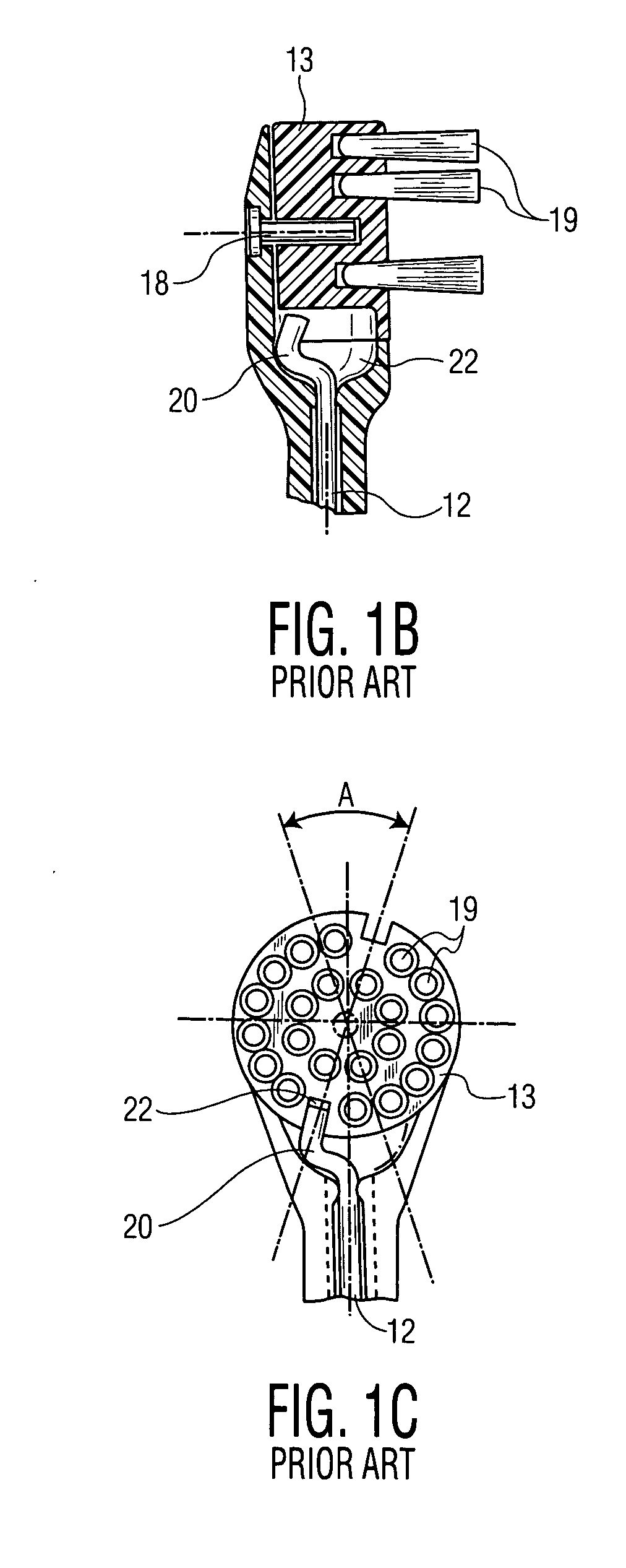Toothbrush with movable head sections for enhanced oral care
a technology of tooth brush and head section, which is applied in the field of toothbrushes, can solve the problems of inability to provide better cleaning, whitening or stimulation than a manual toothbrush, and individual teeth often have extremely complex surfaces, and achieve the effect of improving cleaning efficiency
- Summary
- Abstract
- Description
- Claims
- Application Information
AI Technical Summary
Benefits of technology
Problems solved by technology
Method used
Image
Examples
Embodiment Construction
[0036] Referring first to FIGS. 2 through 7 in which an exemplary powered toothbrush according to a first embodiment is illustrated and generally indicated at 100. The toothbrush 100 includes a handle 102 at a proximal end that defines an interior compartment (not shown) for housing various toothbrush components, including the motor and battery power source, and a brush section 104 that is defined by a neck 106 that terminates in a head 120 at a distal end of the toothbrush 100. The handle 102 has a free proximal end 108 and an opposite, distal neck end 110. The neck 106 generally extends from a first end 112 to a second end 114 with the first end 112 being located at the neck end 110 of the handle 102 and the second end 114 being located at the head 120. In other words, the neck 106 is the portion of the toothbrush 100 that extends between the handle 102 and the head 120. The neck 106 also defines an interior compartment (not shown) for housing various working components of the too...
PUM
 Login to View More
Login to View More Abstract
Description
Claims
Application Information
 Login to View More
Login to View More - R&D
- Intellectual Property
- Life Sciences
- Materials
- Tech Scout
- Unparalleled Data Quality
- Higher Quality Content
- 60% Fewer Hallucinations
Browse by: Latest US Patents, China's latest patents, Technical Efficacy Thesaurus, Application Domain, Technology Topic, Popular Technical Reports.
© 2025 PatSnap. All rights reserved.Legal|Privacy policy|Modern Slavery Act Transparency Statement|Sitemap|About US| Contact US: help@patsnap.com



